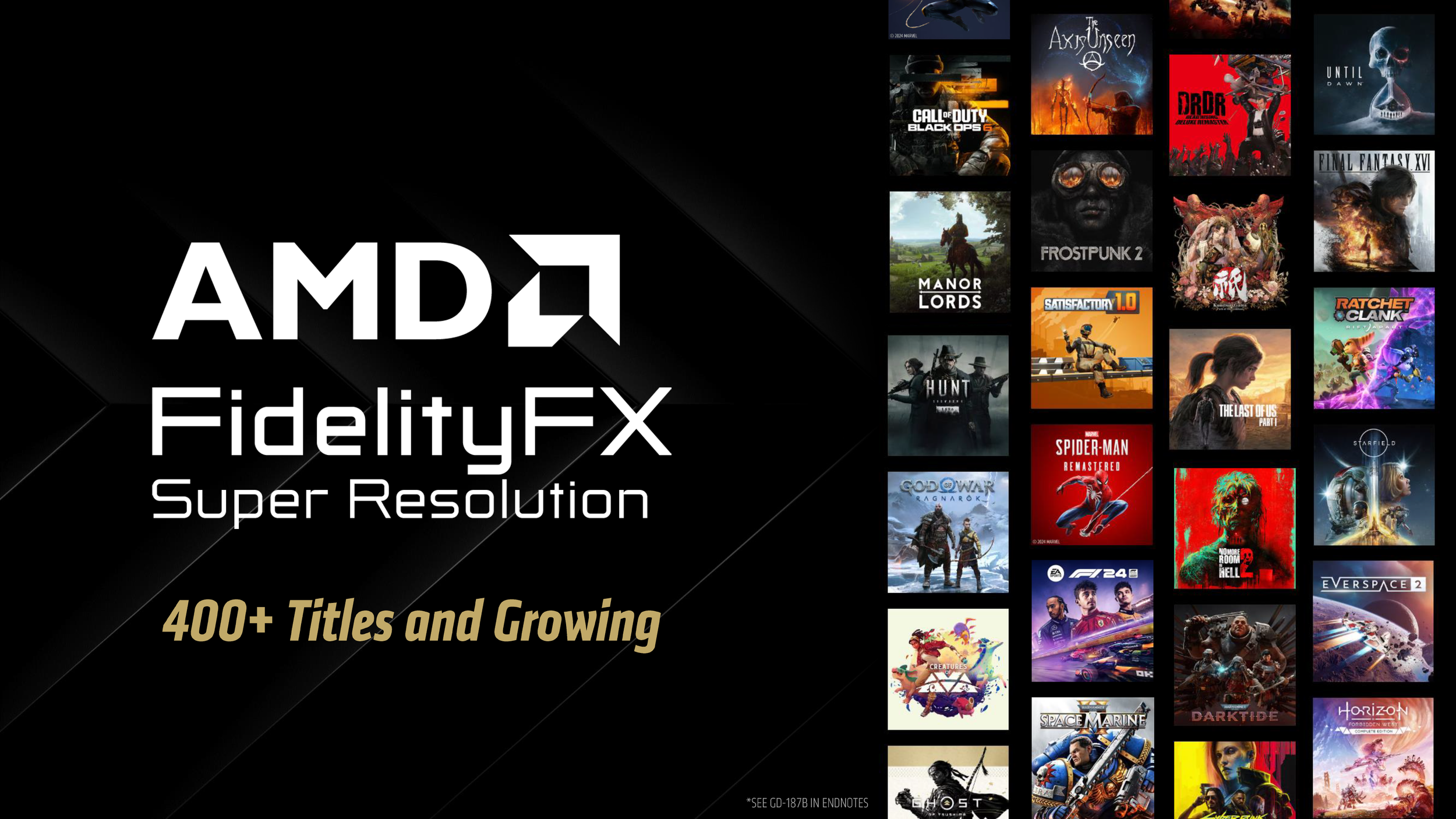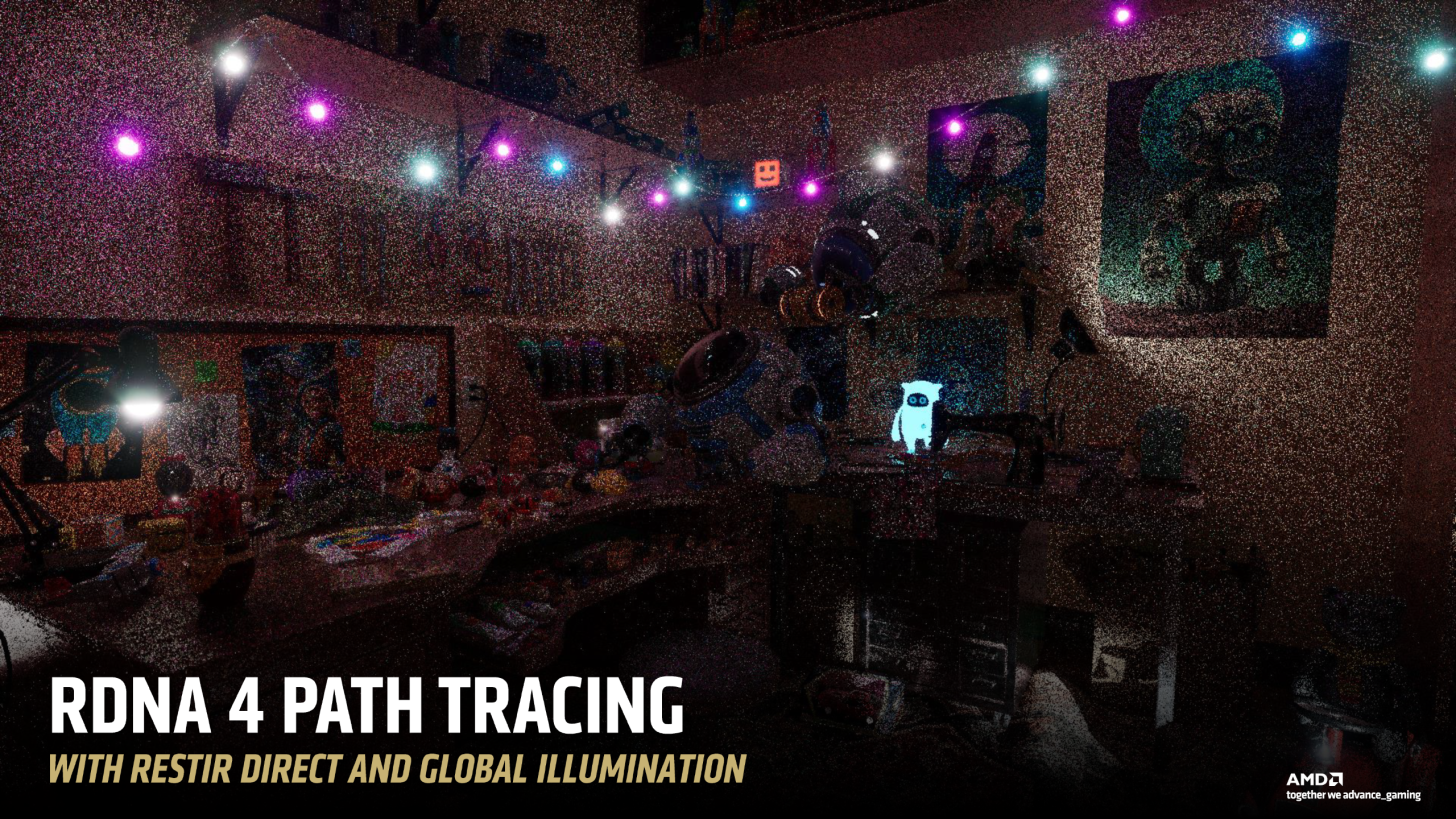AMD Live Stream Announcements: Unveiling the Future of Gaming with Next-Generation GPUs and AI-Enhanced Upscaling
During AMD’s latest live stream, AMD has introduced its next-generation Radeon RX 9070 XT and Radeon RX 9070 graphics cards—the inaugural products of the groundbreaking Radeon RX 9000 series built on the new RDNA 4 architecture. Designed for both high-end and mainstream gaming, these GPUs deliver significant performance gains and enhanced power efficiency, ensuring gamers experience unparalleled visual fidelity and ultra-smooth gameplay. The announcement also featured revolutionary upscaling and frame generation technologies, which further elevate the gaming experience across a wide array of titles.
AMD FSR 4 & Fluid Motion Frames
AMD has radically transformed upscaling and frame generation with the launch of its new FSR 4 and Fluid Motion Frames 2.1 technologies. These innovations leverage advanced AI and machine learning to deliver nearly three times the performance of native rendering in demanding titles.
FSR 4 Technology:
With FSR 4, AMD introduces high-quality, low-latency upscaling coupled with an advanced Frame Gen algorithm. Custom machine learning models—trained on AMD’s Instinct accelerators—enable Radeon RX 9000 “RDNA 4” GPUs to deliver up to 779 TOPS of AI acceleration. This results in AI-enhanced 4K output that can match and even surpass native 4K quality. Performance benchmarks reveal that, for example, in Space Marine 2 at 4K, frame rates can surge from an average of 53 FPS at native settings to approximately 182 FPS in Performance mode. Moreover, many titles see average FPS boosts to over 150–200 compared to native outputs of 60–90 FPS.






Fluid Motion Frames 2.1 Enhancements:
Complementing FSR 4, AMD’s upgraded HYPR-RX suite now features Fluid Motion Frames 2.1. This technology enhances frame generation quality by reducing ghosting and refining temporal tracking. It supports Radeon RX 6000, 7000, and 9070 GPUs, as well as AMD Ryzen AI 300 Series CPUs. On the Radeon RX 9070 XT, this technology provides up to a 3x performance boost, while the new Anti-Lag 2 feature cuts latency by up to 42% in titles such as Apex Legends. With support in over 30 launch titles—and plans to expand to 75+ titles in 2025—developers can integrate these tools seamlessly if their games already support FSR 3.1. For further details, visit AMD FSR.




AMD RDNA 4 Architecture
At the core of AMD’s new Radeon RX 9000 series is the revolutionary RDNA 4 architecture, meticulously engineered to meet the demands of modern high-end gaming and AI-powered applications.
Architectural Breakthroughs:
Building on the legacy of RDNA 3 and RDNA 3.5, the RDNA 4 architecture features enhanced Compute Units equipped with dual SIMD32 vector units and advanced matrix operations. These improvements support 2x-16b and 4x-8b/4b dense matrix rates along with 4:2 structured sparsity, new 8-bit float data types, and efficient matrix load with transpose. Dynamic register allocation further minimizes memory latency, bolstering overall performance.



Memory, Cache, and Ray Tracing Enhancements:
Both Radeon RX 9070 XT and RX 9070 are powered by 16 GB of GDDR6 memory running at 20 Gbps on a 256-bit bus—delivering 640 GB/s of bandwidth. Each card incorporates 64 MB of third-generation Infinity Cache, and the architecture supports PCIe 5.0 x16 for future-proof connectivity. Upgraded 3rd Generation Ray Tracing cores, featuring dual intersection units, hardware instance transforms, and advanced BVH compression (with BVH8 support), reduce memory requirements by over 40% compared to RDNA 3 while significantly boosting ray traversal performance.




Fabrication and Efficiency:
Fabricated on TSMC’s 4nm process node, the full Navi 48 GPU SKU houses up to 53.9 billion transistors within a 356.5mm² die, ensuring compliance with PCIe Gen5 standards. An improved command processor, rebalanced cache system (including up to 8 MB of L2 cache and 2 MB of Aggregate CU cache), and enhanced AI performance (up to a 3.5x boost per compute unit over RDNA 2) collectively set new benchmarks in efficiency and scalability. For a detailed technical overview, see AMD RDNA Technologies.
AMD Radeon RX 9070 XT For $599 & RX 9070
The new Radeon RX 9070 XT and Radeon RX 9070 represent AMD’s bold entry into the next era of gaming GPUs, delivering substantial performance improvements and competitive pricing for both high-end and mainstream segments.
Radeon RX 9070 XT Specifications and Performance:
Based on the full Navi 48 (XT) SKU, the RX 9070 XT features 64 Compute Units (3,584 cores) and achieves clock speeds of up to 2.97 GHz. It is engineered with 128 ROPs, 56 ray tracing accelerators, and 112 hardware AI accelerators, all while operating at a TBP of 304W. Performance metrics reveal that at 4K maximum settings, the RX 9070 XT is on average:51% faster than the RX 6900 XT
42% faster than the RX 7900 GRE
26% faster than the RTX 3090
Additionally, it delivers a 38% performance gain at 1440p compared to the RX 7900 GRE, with native rasterized titles achieving up to 44% gains and native ray tracing titles up to 68%. Priced at $599 US, it strategically positions itself between the RTX 5070 and RTX 5070 Ti.





Radeon RX 9070 Specifications and Performance:
The RX 9070, built on a cut-down Navi 48 (XL) SKU, boasts 56 Compute Units (4,096 cores) with clock speeds up to 2.52 GHz, 128 ROPs, 56 ray tracing accelerators, and 128 hardware AI accelerators, while maintaining a TBP of 220W. This model offers an average performance gain of 21% at 4K and 20% at 1440p over the RX 7900 GRE. When compared with previous generations, it is 38% faster than the RX 6800 XT and 26% faster than the RTX 3080 at 4K. Retailing at $549 US, the RX 9070 not only matches the RTX 5070 price point but also provides a significant VRAM advantage with 16 GB over competing models offering 12 GB.
Both models will be available starting March 6, 2025, with a variety of AIB models expected from partners including ACER, ASUS, ASRock, Gigabyte, PowerColor, Sapphire, XFX, Yeston, and Vastarmor. For further product details, please visit AMD’s Official Website.
Upgraded Ray Tracing, AI Enhancements, & Multimedia Improvements
AMD’s latest live stream announcements also detailed significant upgrades in ray tracing, AI-assisted rendering, and multimedia performance:
Enhanced Ray Tracing and Path Tracing:
Upgraded 3rd Generation Ray Tracing cores deliver doubled ray intersection rates, improved BVH compression, accelerated ray traversal and shading, and refined management of Oriented Bounding Boxes. A new Neural Supersampling and Denoising technique for path tracing reduces traversal costs and eliminates traditional in-engine denoisers, providing a comprehensive lighting solution.
AI and Content Creation Boosts:
The Radeon RX 9000 series offers an average AI performance increase of 55% over the previous RDNA 3 lineup and a 16.25% boost in content creation performance. Gen AI performance is enhanced up to 4.1x using the ONNX runtime, while optimizing memory usage.




Multimedia Enhancements:
AMD’s Media Engine now supports up to 8K encoding at 75 FPS (HEVC/AV1), offers improved AVC/H.264 and HEVC encode quality, and doubles AV1 throughput. The updated Radiance Display Engine supports DisplayPort 2.1a and HDMI 2.1b, along with advanced scaling and sharpening functionalities. Additionally, AMD’s Adrenalin Suite has been bolstered with new features including Radeon Image Sharpening 2, a re-architected Encoder, and several AI tools like the AMD AI Apps Manager and AMD Chat, which are set to transform user experiences across both gaming and content creation.
What are your thoughts on AMD’s latest GPU innovations and architectural breakthroughs? Do you believe these performance gains, advanced AI features, and cutting-edge upscaling technologies will redefine your gaming experience? Share your insights and join the conversation below!








